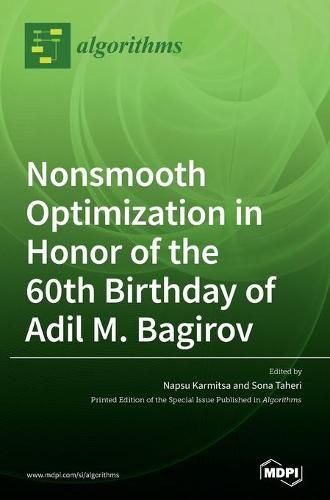Readings Newsletter
Become a Readings Member to make your shopping experience even easier.
Sign in or sign up for free!
You’re not far away from qualifying for FREE standard shipping within Australia
You’ve qualified for FREE standard shipping within Australia
The cart is loading…






This title is printed to order. This book may have been self-published. If so, we cannot guarantee the quality of the content. In the main most books will have gone through the editing process however some may not. We therefore suggest that you be aware of this before ordering this book. If in doubt check either the author or publisher’s details as we are unable to accept any returns unless they are faulty. Please contact us if you have any questions.
The aim of this book was to collect the most recent methods developed for NSO and its practical applications. The book contains seven papers: The first is the foreword by the Guest Editors giving a brief review of NSO and its real-life applications and acknowledging the outstanding contributions of Professor Adil Bagirov to both the theoretical and practical aspects of NSO. The second paper introduces a new and very efficient algorithm for solving uncertain unit-commitment (UC) problems. The third paper proposes a new nonsmooth version of the generalized damped Gauss-Newton method for solving nonlinear complementarity problems. In the fourth paper, the abs-linear representation of piecewise linear functions is extended to yield simultaneously their DC decomposition as well as the pair of generalized gradients. The fifth paper presents the use of biased-randomized algorithms as an effective methodology to cope with NP-hard and nonsmooth optimization problems in many practical applications. In the sixth paper, a problem concerning the scheduling of nuclear waste disposal is modeled as a nonsmooth multiobjective mixed-integer nonlinear optimization problem, and a novel method using the two-slope parameterized achievement scalarizing functions is introduced. Finally, the last paper considers binary classification of a multiple instance learning problem and formulates the learning problem as a nonconvex nonsmooth unconstrained optimization problem with a DC objective function.
$9.00 standard shipping within Australia
FREE standard shipping within Australia for orders over $100.00
Express & International shipping calculated at checkout
This title is printed to order. This book may have been self-published. If so, we cannot guarantee the quality of the content. In the main most books will have gone through the editing process however some may not. We therefore suggest that you be aware of this before ordering this book. If in doubt check either the author or publisher’s details as we are unable to accept any returns unless they are faulty. Please contact us if you have any questions.
The aim of this book was to collect the most recent methods developed for NSO and its practical applications. The book contains seven papers: The first is the foreword by the Guest Editors giving a brief review of NSO and its real-life applications and acknowledging the outstanding contributions of Professor Adil Bagirov to both the theoretical and practical aspects of NSO. The second paper introduces a new and very efficient algorithm for solving uncertain unit-commitment (UC) problems. The third paper proposes a new nonsmooth version of the generalized damped Gauss-Newton method for solving nonlinear complementarity problems. In the fourth paper, the abs-linear representation of piecewise linear functions is extended to yield simultaneously their DC decomposition as well as the pair of generalized gradients. The fifth paper presents the use of biased-randomized algorithms as an effective methodology to cope with NP-hard and nonsmooth optimization problems in many practical applications. In the sixth paper, a problem concerning the scheduling of nuclear waste disposal is modeled as a nonsmooth multiobjective mixed-integer nonlinear optimization problem, and a novel method using the two-slope parameterized achievement scalarizing functions is introduced. Finally, the last paper considers binary classification of a multiple instance learning problem and formulates the learning problem as a nonconvex nonsmooth unconstrained optimization problem with a DC objective function.